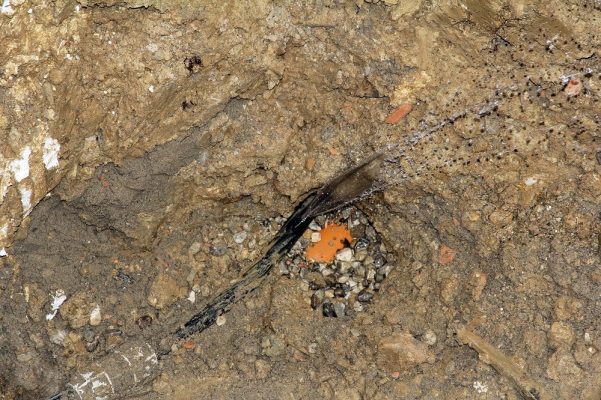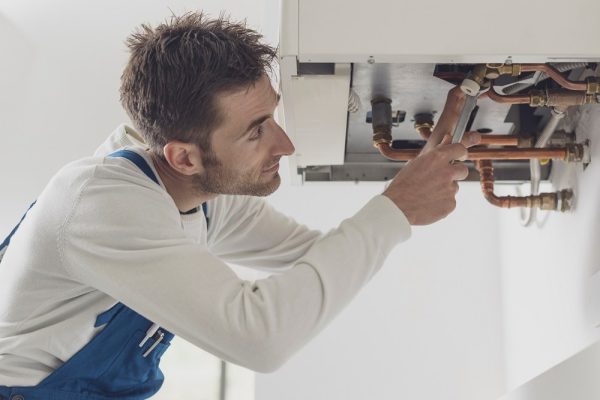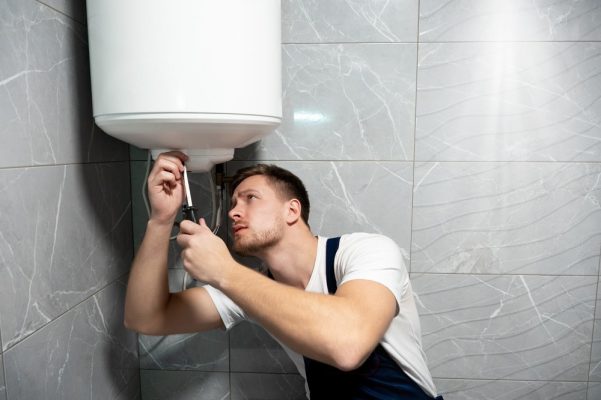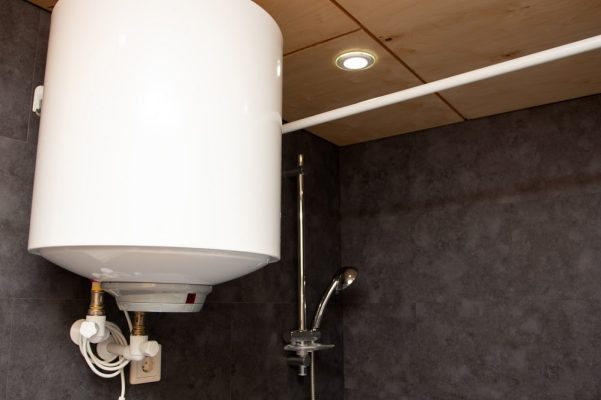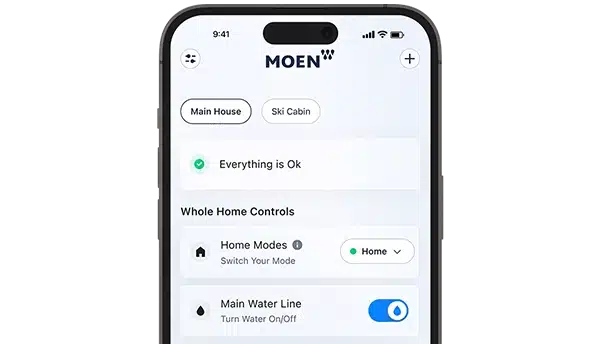Hot water is a daily luxury that most Americans take for granted—right up until that hot water becomes unavailable. If your shower is running cold, it could be because your family has already used up all the hot water in your water heater. Or, it could mean that your water heater is struggling and needs repairs or water heater replacement in Sacramento. How do you know if it’s a temporary hot water shortage or a bigger problem? Here are a few things to watch out for.
Water Heater Troubles
Varying Water Temperatures
If the water fluctuates between too hot, too cold, and just right, then the issue isn’t a shortage of hot water. Rather, it’s likely an issue with your thermostat or heating element. Try adjusting your thermostat to a cooler setting to see if a simple change in temperature gets things running right again. If not, you may need to replace the thermostat or the heating element to fix the problem.
Consistently Lukewarm Water
What if your shower isn’t turning cold, but instead is constantly lukewarm? This usually means that there is a problem with the upper heating element. A defective upper heating element can be replaced by a water heater repair technician, but please note we do not do repairs on water heaters at Bullseye Leak Detection. You will need to find someone who specializes in these repairs, or contact us to replace your entire water heater.
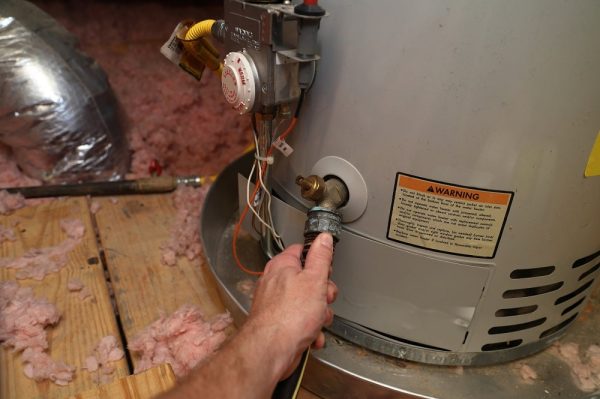
Running Out of Hot Water Quickly
All hot water tanks have a limit for how much hot water they can supply at once; so, all hot water heaters can run out of hot water. However, if you feel like your hot water supply has become very limited recently, there could be a number of possible causes.
One possible issue is a defective lower heating element. Again, this can be replaced by a water heater tech. Another possibility is a buildup of minerals in the base of your water heater tank. If you’re not flushing your water heater regularly, minerals and settle to the bottom of the tank, effectively reducing the tank’s size and, therefore, your overall hot water supply. Flushing the tank could help with this, but if the sediment buildup is severe enough, it might be better to just replace the water heater.
Leaking Water Heater Tank
We know your water heater is probably tucked away in a utility closet in your garage or somewhere else you rarely look, but take a moment to check it now. Look for any signs of moisture around the base of the tank. Is there any dripping or pooling around the bottom? If so, this would indicate a serious structural failure of the tank. Over time, rust and corrosion can occur in metal water heater tanks, which can compromise the structural integrity of the metal. Eventually, the tank can crack and leak, and it will require replacement.
Reduced Water Flow
Your kids are taking extra-long, extra-hot showers before you may steal all the hot water, but it shouldn’t reduce the water flow or water pressure anywhere in your home. If you notice reduced water flow, this is likely another sign of scale or sediment buildup in your water tank; the buildup could also be in the pipes connected to your hot water heater. Either way, you’ll need to have the water heater and pipes inspected and descaled, and possibly have the water heater replaced.
Unusual Sounds
If you hear any unusual sounds coming from your water tank when you turn on the hot water, this is a sure sign that something is wrong. The sound could be cracking, popping, whining, banging, or gurgling noise—they’re all unusual and should be inspected by a professional. Generally, these noises are caused by burning off-scale or sediment in the tank, or a heating element that’s on its last leg. If you hear a boiling noise, call for help immediately; this is usually an indication of intense overheating or pressure buildup, which can be extremely dangerous.
Hot Water Shortage
Finally, it’s worth noting that if you have a consistent hot water shortage, even if there’s nothing wrong with your existing water heater, you should seriously consider replacing it. It’s obviously not meeting your home’s not water needs, and you either need a larger tank or a tankless water heater. Contact Bullseye Leak Detection for water heater installation in Sacramento today.
Why Won’t My Home’s Water Get Hot?
Getting hot water on demand is a luxury that most of us take for granted daily. However, when that convenience suddenly disappears, you realize how much you appreciate it. Of course, hot water doesn’t necessarily disappear overnight. You might be able to get your water to a lukewarm temperature, or get hot water for a while, only to lose it later. What’s causing your hot water to fail you? Keep reading to learn the potential causes and whether you need a new water heater or a water main repair in Sacramento.
Sediment Buildup in Water Heater Tank
If you have a traditional water heater with a tank, check that tank for sediment buildup. As the water inside your tank is heated, minerals from the water can settle to the bottom of the tank and form a hard crust. Because the heating elements are underneath the tank, it is difficult for the water heater to get to the right temperature. When this is the problem, it will typically manifest as lukewarm water rather than a complete loss of hot water. To check for sediment buildup, you can open the drain port or valve at the bottom of the tank, and drain it through a hose or into a bucket. If you see a large amount of sediment or if you see only a trickle of water come out, there’s a good chance your tank has buildup.
Undersized Water Heater
If the problem you’re facing with your hot water is frequently running out, then the odds are that your water heater is too small to meet your family’s needs. Traditional water heaters always keep a certain number of gallons of water hot. If you drain that tank rapidly, it won’t have time to refill and reheat your water supply. You could correct this issue by being more conscientious of your hot water consumption; for example, make sure you space out family members’ showers and don’t try to shower when the washer or dishwasher is running. However, the better solution is typically to replace your water heater with one that has a larger tank or with a tankless water heater that heats water on demand instead of storing it.
Broken Dip Tube
One feature of a traditional water heater that most people don’t know about is the dip tube. This component makes it possible for you to continue receiving hot water, even as the water heater refills with cold water and starts reheating it for your use. The dip tube directs the cold water to the bottom of the tank, allowing the hot water to rise naturally rather than having the different temperatures mix. If the dip tube breaks, the temperature of your water will drop as cold water is added to the water heater tank, resulting in water that is anywhere from lukewarm to cold, depending on the ratio of the hot and cold water supply.
Extremely Cold Weather
Winter isn’t gone just yet, and many areas of the US are still experiencing pretty frigid temperature drops. When this happens, it can impact your hot water supply by dropping the core temperature of your water heater and forcing it to work harder and longer to get that water temperature back up. While this typically won’t result in a complete lack of hot water, you might notice that your water isn’t getting as hot as you would like during these cold snaps. The solution is to turn the temperature on your water heater a little bit; for safety purposes, however, ensure that the water heater temperature setting does not exceed 120 degrees Fahrenheit. You can turn it back to its previous setting when winter is over.
Break in Hot Water Supply Line
Most issues with your hot water supply will be connected to your water heater. However, a lack of hot water in your home may be caused by a break in a water line rather than a problem with the water heater itself. If there’s a leak in your hot water line, you may notice that the hot water isn’t flowing to where you need it like it used to. Water pressure may drop significantly when using hot water, or you may only get lukewarm water when trying to get hot water.
Signs It Is Time to Replace Your Water Heater
Hot water shortage
If your water heater simply isn’t providing enough hot water for your needs, you should look into replacing it with a newer, larger, and/or more efficient model.
Discolored water
Does your hot water have a slightly red or orange hue to it? That could indicate your water heater is rusting on the inside. Call a professional immediately to have it inspected and replaced before that rusting leads to damaging leaks.
Leaks
Speaking of leaks, that’s another sign there’s a problem. If there’s moisture around your water heater, something’s amiss. There could be damage to your water heater that means a replacement is in order.
Rumbling or banging
Do you hear a rattling, rumbling, or banging noise coming from your water heater when it switches on? This could be a result of sediment buildup, which requires you to replace your water heater.
Old water heater
Finally, the age of your water heater itself is a factor that bears consideration. If your water heater is 10 years old or more, you should replace it with a more efficient, modern model.
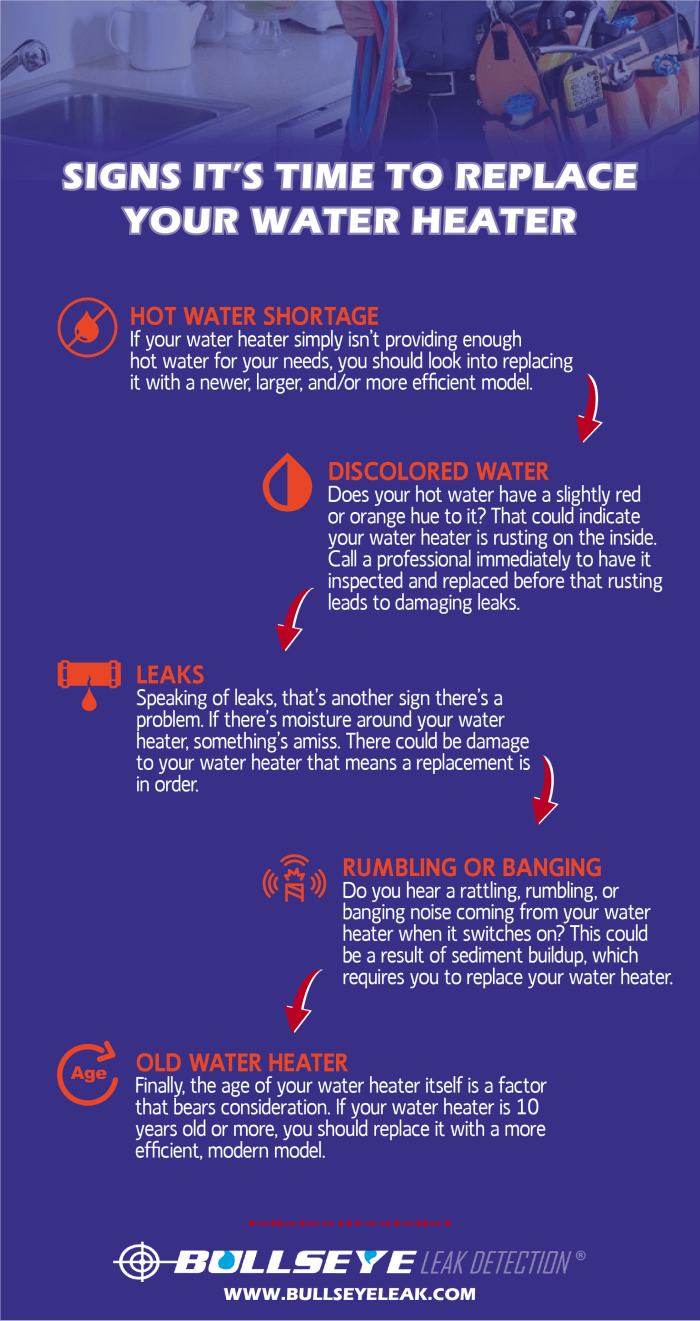
How to Keep Your Water Heater in Tip-Top Shape
Your water heater probably doesn’t get enough credit for its work. Water heaters with tanks have to constantly work to maintain the temperature of the water inside them so that you have hot water whenever you need it. But most people don’t notice the work their water heater does until it stops working. The best way to avoid running out of hot water when you need it? The answer is proper water heater maintenance. If you’re unsure how to maintain your water heater, keep reading to get some tips from our experts in water heater replacements and water intrusion repair in Sacramento.
Flush Your Water Heater Yearly
One of the best ways to maintain your water heater is to flush it at least once a year. Sediment buildup is one of the leading causes of water heater failure and inefficient water heating. As your water heater heats up your water supply, sediment settles to the bottom of the tank. This can form into a hard crust, which will continue to grow and reduce the capacity of your water heater tank. Additionally, that layer of sediment forms a barrier between the heating elements below the tank and the water inside of it, making it harder for the water heater to maintain your water temperature.
The harder your water heater has to work to do its job, the faster it will break down. Flushing your tank helps to remove this sediment buildup so that you can have a constant supply of hot water and your water heater can have a longer functional life. Ultimately, this will save you significant amounts of money over the years by reducing your monthly utility bill and lowering the risk of premature water heater failure.
Check Your Water Heater’s Thermostat
This is only something you have to do once, but if you haven’t looked at the thermostat on your water heater since it was installed, you should definitely do so. Many manufacturers set their water heaters to a default of 140 degrees Fahrenheit, which is much hotter than necessary in your average home. Lowering the temperature to 120 degrees can reduce the risk of scalding when using hot water. The lower temperature also slows down corrosion in both the tank and the pipes, helping your water heater and your hot water supply lines last longer. This can have huge money-saving benefits for your home since corroded pipes will almost always lead to plumbing repairs and water damage.
Use a Water Softening Agent
Remember that sediment buildup we mentioned earlier? It happens much more quickly in areas that have hard water. If you live in such an area, you should use a water-softening agent to increase the lifespan of your water heater. This will slow the sediment accumulation in your tank so that it doesn’t develop a thick layer at the bottom of the tank in between your annual flushes.
Insulate the Tank
Water heaters with tanks have to constantly work to maintain the temperature of the water inside them. The faster that water cools off, the more frequently the heater has to turn on to restore proper temperatures. As we mentioned before, the harder a water heater has to work to do its job, the first it will wear itself out. You can reduce the frequency at which your water heater has to warm up the tank by insulating the tank itself and connecting pipes. A good insulation layer is relatively inexpensive and easy to install yourself. Keeping the heat inside the tank for longer will prolong your water heater’s functional life while reducing your utility bill.
When Your Water Heater Fails
Of course, all water heaters will eventually need to be replaced. If your water heater is a decade old and has begun to give you consistent troubles, then it’s probably time to install a new one. We can help you install a newer, more efficient water heater; we even carry top-of-the-line tankless water heaters, which can provide a constant hot water supply without running out. Newer models are also more efficient, so that you can save money on your heating bill each month after installation. If your water heater isn’t working or has begun to leak, contact Bullseye Leak Detection today.

